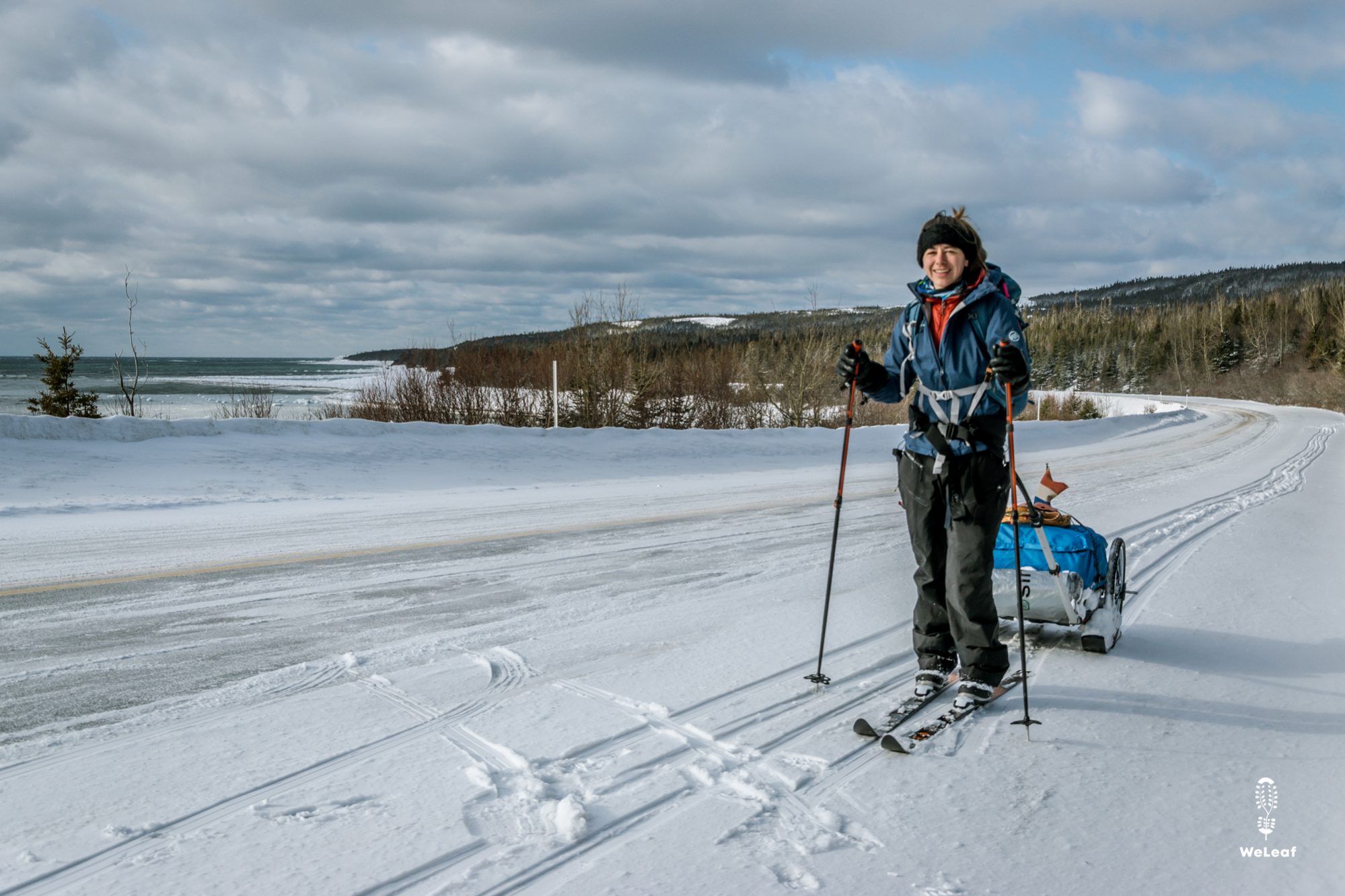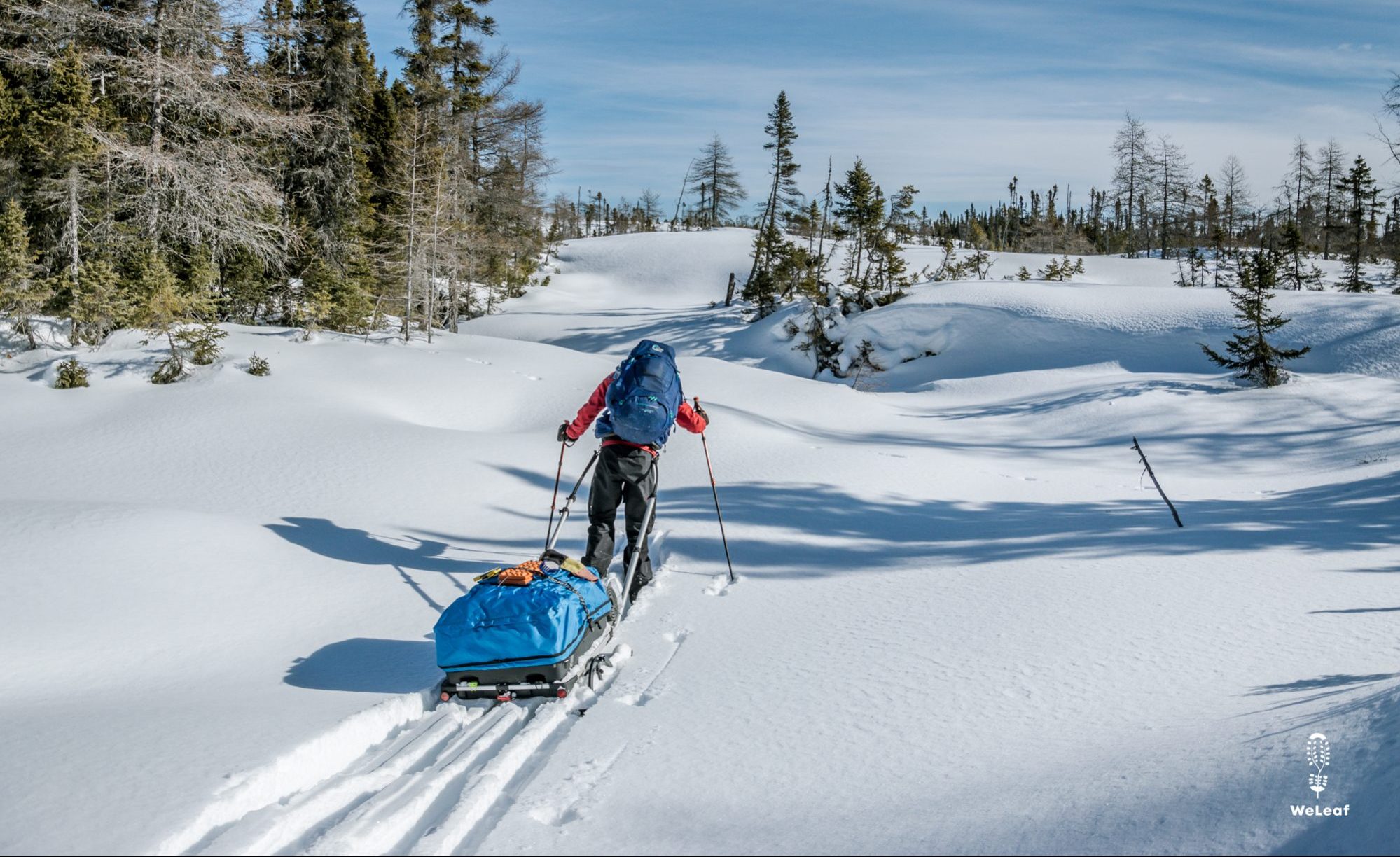
White obstacles

The people of the North Coast
April 3, 2020
15 interesting facts about Quebec
April 17, 2020
Vrijdag February 14th - Shelter Loup Marin
We haven't seen anyone on the trail for the last two days, except for our skidoo friend, Norbert, who spoiled us with warm soup and biscuits. We wonder where all the other travellers, all those who have the Route Blanche as their destination. Everywhere people told us that the Route Blanche is a mecca for snowmobiles, but we don't see anyone on the T3, the snowmobile trail we follow along the north coast. Every now and then we get closer to route 138, the paved road that goes to the beginning of Route Blanche. There we see pick-ups with snowmobiles on the back. “Do they all drive there?" we wonder aloud. Or is there another reason? The answer follows a few hours later.
It is -25 degrees when we leave the small shelter in the morning. Even inside it was -10 degrees when we woke up, our drinking bottle was frozen. Norbert told us yesterday that it will not get warmer than -20 today, but the sun is shining and the wind is in the back. It doesn't feel like -20, but when we breathe in through our nose, the nose hairs briefly freeze together. The trail is prepared by the groomer, a kind of big tractor with a trailer behind it that drags over the snow and leaves a flat surface. Due to the cold, the surface is hard and smooth. On the flat parts we glide forward easily, uphill we have to walk with the skis in hand, downhill we race with some risk. After five kilometers the trail turns to the right, only the beautiful, smooth path does not turn. It stops in the turn and our trail becomes a rough tractor track in the snow. Easy gliding becomes stumbling, downhill we have to walk, just like uphill. As long as there is a track, we can continue, we have enough food for the time being. At the end of the day, the track turns into a narrow path created by one snowmobile. To our surprise, there is a small shelter along the route. The door is snowed in with a thick layer of snow. "Nobody has been here all winter," says Zoë. "Curious what we will see tomorrow" is Olivier's answer.
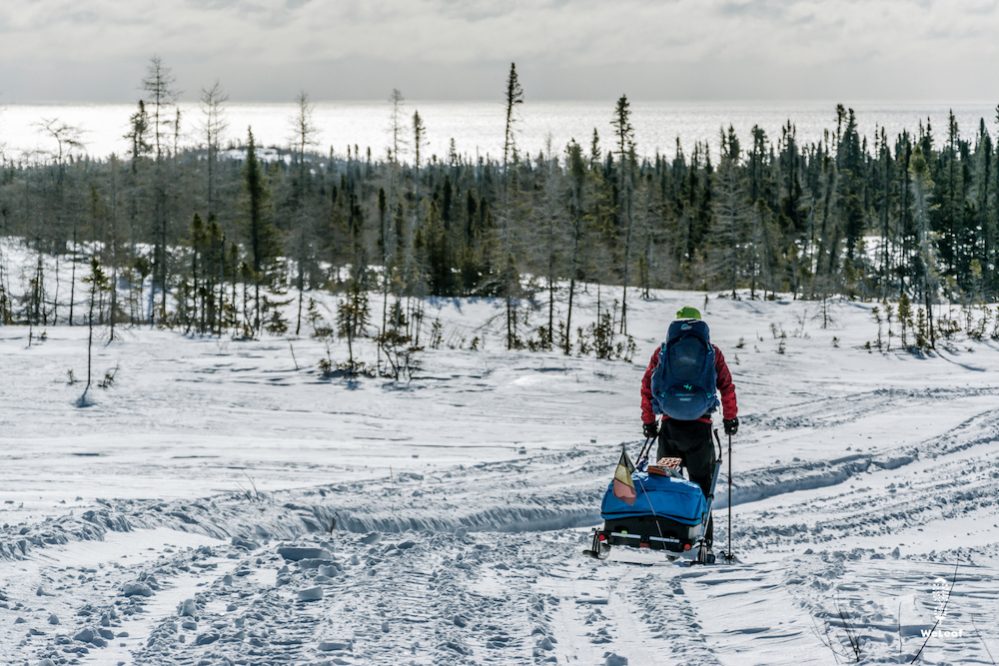
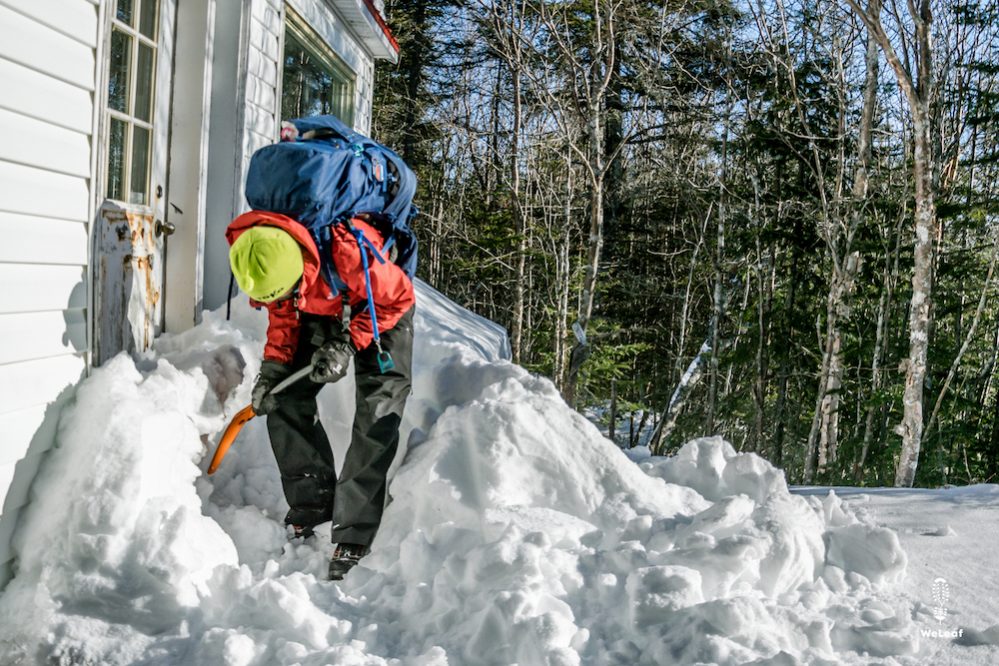
The next morning we follow the lonely snowmobile track for a few kilometers. The strong north wind scorches our face and we wrap ourselves up with a mask and ski goggles. A snowmobile comes from one direction on one of the open plains. He pulls a sleigh behind him, empty. He stops and asks if we are the skiers going to Blanc-Sablon. 'The route goes to the right here' and we look at the open area, but we can’t see a trail. "Is the route not marked?". "Nope, too little snow and not enough volunteers this year," says Marco. "Do you have a map?" he asks. We have our GPS, but we roughly drew the route in MyMaps from Google. So far everything was perfectly marked and there was no need to make our digital map exact. "Where's this path going?" we ask, pointing to the snowmobile track that we have been following for a few kilometers. "This goes to my cabin. Nobody else comes here. ‘Desperately we stop. We are not prepared for this and Marco cannot tell us when the trail is marked again. "Let's try it," we say, stubborn as always. Actually, we already know it's probably crazy, but our stubbornness forces us to try it. We stick the climbing skins, a synthetic strip with hairs that rise in one direction, under the skis and plow our way through the untouched landscape.
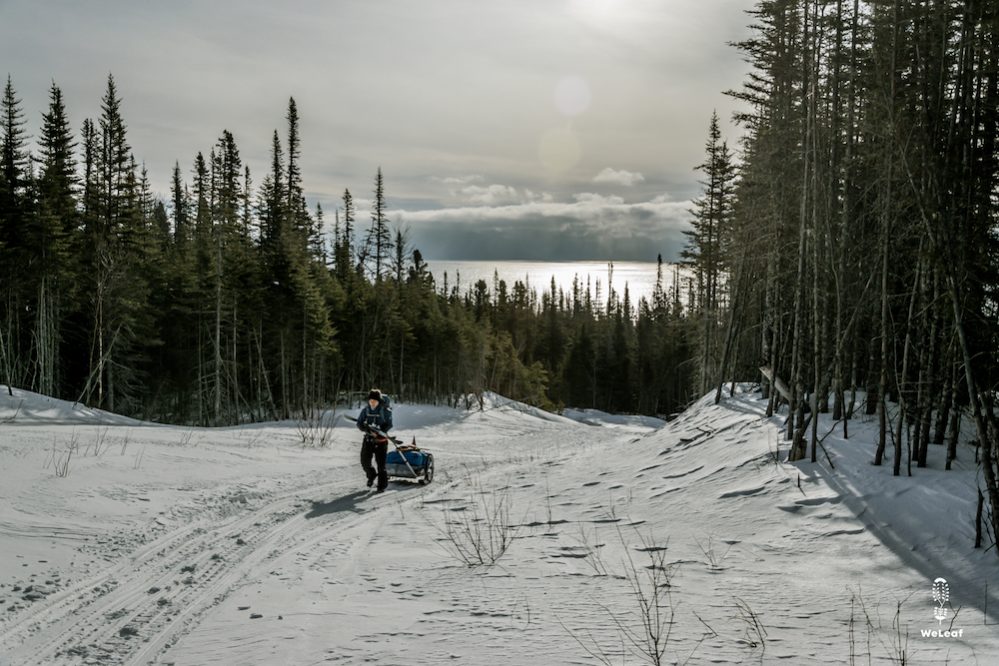
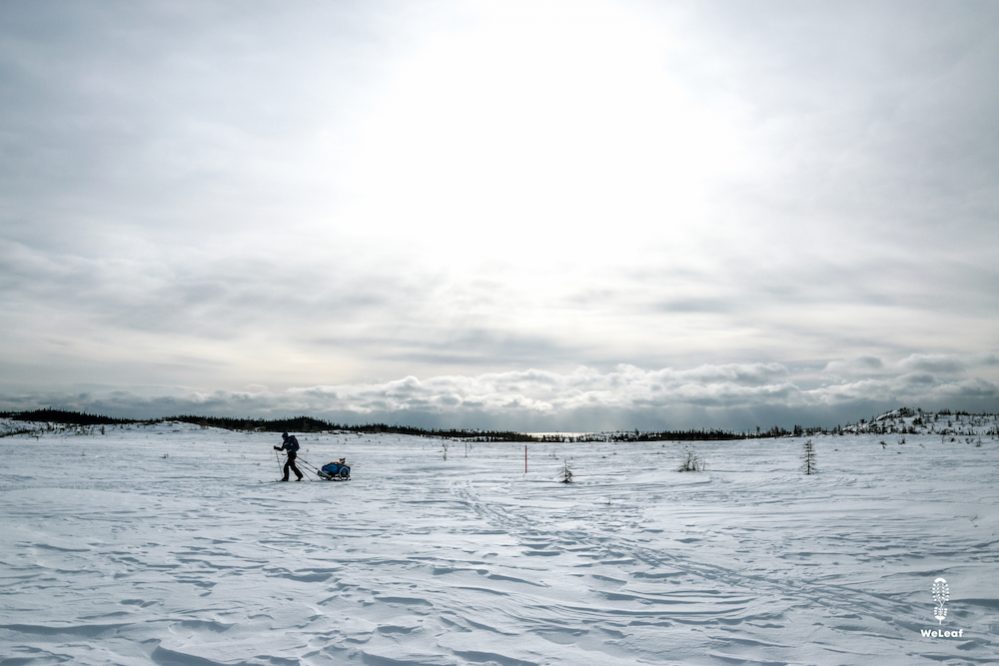
An hour later we stare into the distance, looking for a sign of the route. We already took some wrong turn a few times because there is hardly any indication. If the trail is maintained, there are signposts or wooden poles everywhere that mark the route. Now there is only very occasionally a sign that they didn't remove after the previous winter. It is just as easy to get lost as in a desert with only sand, here we only see white. It is dangerous to follow a random path through the snow, because there are unexpected cliffs and unfrozen rivers. No snowmobile has passed this year, so the snow is not packed together. Even on skis we sink deep and drag the trailer behind us. Our speed drops to half a kilometer per hour. It is unbelievably beautiful to be in such a virgin white landscape where no one has been, but we also realise a hard fact. At this speed it takes at least ten days to the next village. Our food supply counts six more meals, including the two emergency meals. It is not impossible, but we are not prepared for this. It is smarter to follow the road. For the second time in a few weeks, we have to turn around and change our plans. We ski back the same route, which is now a bit easier because we can follow our own, packed, tracks. This time we are less disappointed than the false start in Quebec. We are still disappointed, but we are proud that we made a quick decision again. In the cabin, we weigh our options, which is actually limited to one. We will have to follow route 138 to a point where the trail is maintained again. Stubborn as we are, we decide to do it on foot, walking 29 kilometers.
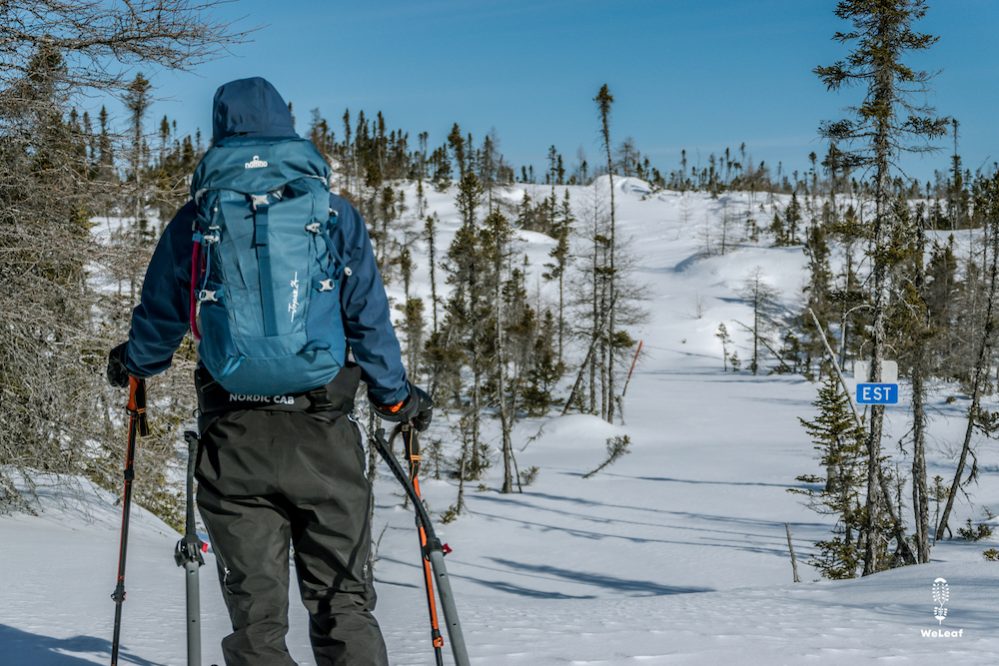
The trail is visible, but almost impossible through the deep snow
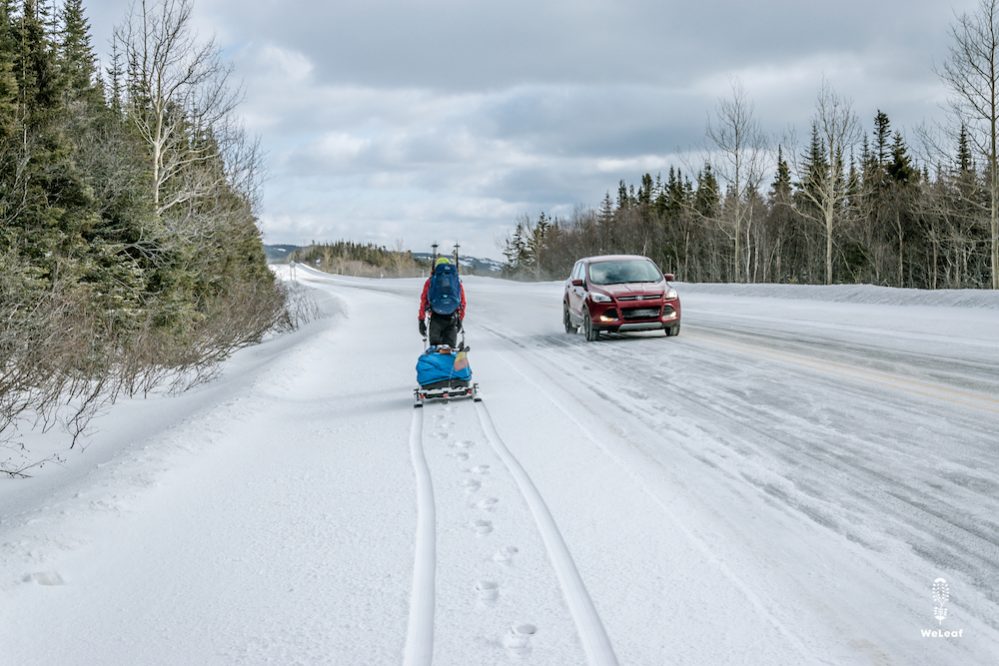
The next morning we wake up early when the whole shelter is shaking under the impact of a snowstorm. “That’s a day in the cabin" says Zoë, who can enjoy a day of rest in such a tiny house. Olivier accepts the situation, although he secretly looks at the sky in the hope that the blizzard will pass by. Unfortunately for Zoë the snowstorm calms down a little and we decide to leave because we lost a day yesterday, that’s how our mind works. We ski through a fresh layer of snow to the asphalt road and see that it is completely snowed under. "We can still ski today" we laugh cheerfully. We ski over the hard shoulder, but a large snowplow interrupts the fun. We tie the skis on the back and walk on, and a little later we change the skis on the trailer for the wheels. Our average speed on the trail is about four kilometers per hour, but walking on an asphalted road we reach more than five kilometers per hour. “We are faster in Blanc Sablon if we walk all the way”, but also this part we preferred skiing. The snowy road is beautiful, with the occasional view on the frozen bays, but we are on the north coast to ski and laugh at our own stubbornness. After 25 kilometers it is time for a lunch break. We try to be sheltered behind a pile of snow, while Zoë prepares a wrap with walnuts and shredded cheese. Olivier checks the GPS. "We have a little problem.". "It is more than 29 kilometers I guess?". “It is still 20 kilometers to the first village. We will never make it today. ”We cannot just camp next to the road because the shoulder is nowhere wider than 3 meters. "We will stick our thumb out and see."
After a five minute walking, a truck from Transport Quebec is standing next to the road. "Can I help you?" he asks gently. "We're on our way to Sheldrake, but it's a little further than we thought." "I'm going that way, do you want a ride?". We usually reject the word “a ride", being stubborn to do everything on human power, but luckily we have learned to put that aside every now and then. We walked 25 kilometers ourselves and that is enough to put our mind at ease. We tell Hubert that we know a person in Rivière-au-Tonnere, ten kilometers away from Sheldrake. "I live there! Who is it?" he asks enthusiastically. “Michèle, euuuhh. The last name is in our phone ”. The north coast is a very small community and it feels like everyone knows everyone. People always ask us for the last name, but we already have trouble remembering all the first names. Still, the surname is key in this region. He says there are only two people in the village called Michèle and he knows everyone. "Michèle Depeyre" says Olivier when he finds the name in his phone. "Ah, I don't think she's there because she only comes here a few times a year." "She should have arrived on Thursday," we say hopefully. "We have the phone number, so maybe we can call." “We'll drive over to their house and we'll know immediately if they are there. They live on a beautiful spot”. There is a car in front of the door and we can see somebody watching television. Carefully we knock and Michèle opens the door, surprised. “You are going fast! Come on in".
